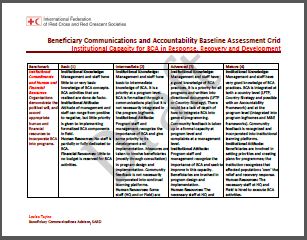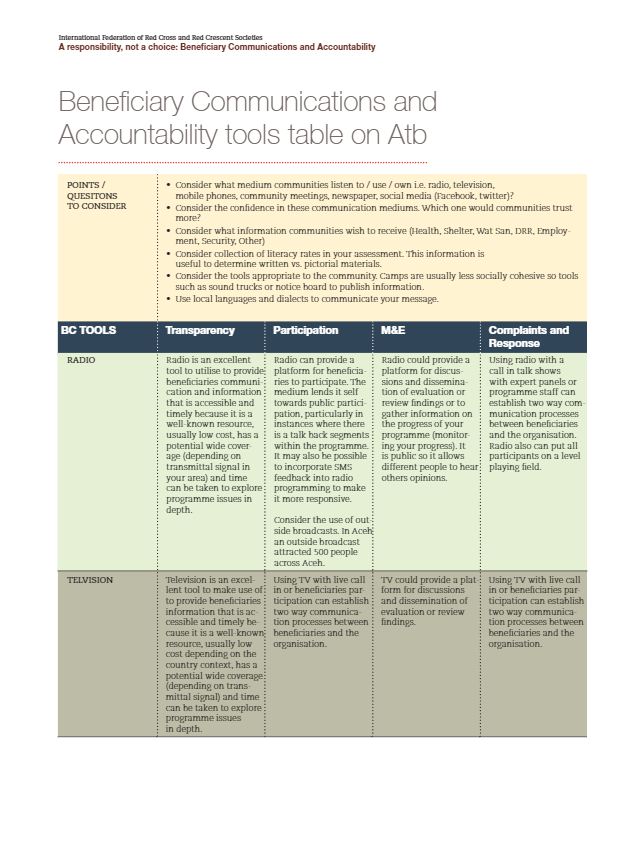Purpose:
This document looks at institutional benchmarks in the conduct of BCA. It covers benchmarks for basic, intermediate, advanced and mature levels.
Overview:
Benchmarks covered include:
- Institutional commitments and human and financial resources: organisations demonstrate political will and allocate appropriate human and financial resources to incorporate BCA into programmes.
- Information sharing: tools and mechanisms are developed to increase beneficiaries’ capacity to make informed decisions and increase knowledge-sharing.
- Participation: participatory structures are developed that improve beneficiary decision-making capacity on key aspects of programme delivery.
- Feedback and complaints handling: a community-based complaints and response mechanism is developed to reduce the risk of fraud and abuse and ensure good quality programme delivery.
Usage: Guidance for project implementation; monitoring and evaluation
Audiences: Technical staff
Reference: International Federation of Red Cross and Red Crescent Societies (n.d.). Beneficiary Communications and Accountability (BCA) Baseline Assessment Grid. Institutional Capacity for BCA in Response, Recovery and Development. International Federation of Red Cross and Red Crescent Societies (pp. 1-6).
![]()



